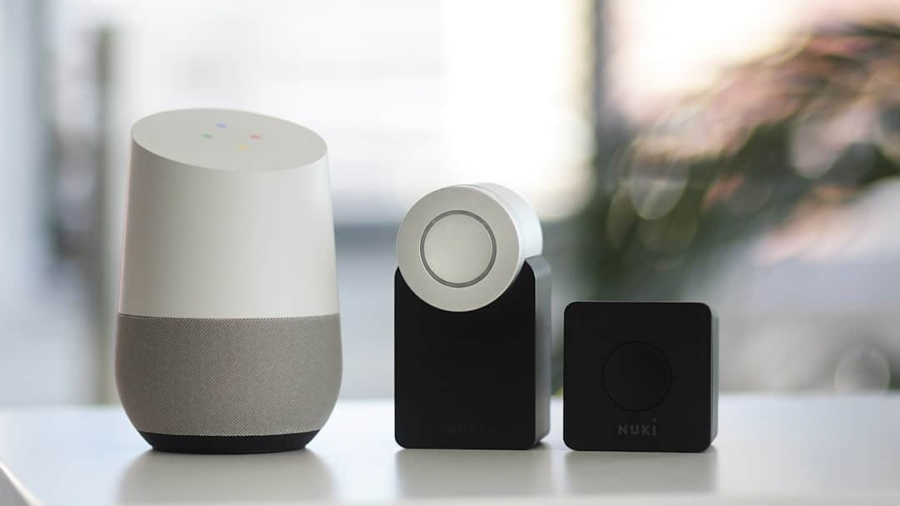In an increasingly interconnected world, cross-device connectivity has emerged as a pivotal aspect of modern technology. This concept refers to the ability of various devices—ranging from smartphones and tablets to smart home appliances and wearables—to communicate and share data seamlessly. The proliferation of the Internet of Things (IoT) has further amplified the importance of cross-device connectivity, enabling users to control and monitor multiple devices from a single interface.
As our reliance on technology grows, the demand for efficient and reliable cross-device communication becomes paramount, influencing everything from personal convenience to industrial automation. The significance of cross-device connectivity extends beyond mere convenience; it is reshaping how we interact with technology in our daily lives. For instance, smart home ecosystems allow users to manage lighting, heating, and security systems through their smartphones or voice-activated assistants.
In the healthcare sector, wearable devices can transmit vital health data to medical professionals in real-time, enhancing patient care. As we delve deeper into the intricacies of cross-device connectivity, it becomes evident that understanding the underlying wireless standards and their evolution is crucial for harnessing the full potential of this technology.
Key Takeaways
- Cross-device connectivity refers to the ability of different devices to seamlessly communicate and share data with each other.
- Current wireless standards like Wi-Fi and Bluetooth have limitations in terms of range, speed, and device compatibility.
- The evolution of wireless standards for cross-device connectivity has led to the development of technologies like Zigbee, Z-Wave, and Thread, which offer improved connectivity and interoperability.
- 5G is expected to play a crucial role in cross-device connectivity by providing faster speeds, lower latency, and increased capacity for connecting a large number of devices.
- The rise of IoT has significantly impacted cross-device connectivity by enabling a wide range of devices to connect and communicate with each other, leading to increased complexity and security concerns.
Current Wireless Standards and Their Limitations
The landscape of wireless communication is dominated by several established standards, each with its own strengths and weaknesses. Wi-Fi, Bluetooth, Zigbee, and cellular networks are among the most prevalent technologies facilitating cross-device connectivity. Wi-Fi, for instance, offers high-speed internet access and is widely used in homes and businesses.
However, its range is limited, and performance can degrade significantly in crowded environments or when multiple devices are connected simultaneously. This limitation can hinder seamless communication between devices, particularly in scenarios where low latency is critical. Bluetooth, on the other hand, excels in short-range communication and is commonly used for connecting peripherals like headphones and fitness trackers.
While it consumes less power than Wi-Fi, its data transfer rates are lower, making it less suitable for applications requiring high bandwidth. Zigbee is another wireless standard designed for low-power, low-data-rate applications, often used in smart home devices. However, its limited range and reliance on a mesh network can complicate device interoperability.
These limitations highlight the need for more robust wireless standards that can support a diverse array of devices while ensuring reliable performance across various environments.
The Evolution of Wireless Standards for Cross-Device Connectivity
The evolution of wireless standards has been driven by the need for improved connectivity solutions that can accommodate the growing number of devices in our lives. Early wireless technologies were primarily focused on point-to-point communication, but as the demand for interconnected systems increased, so did the complexity of these standards.
11ax) marked a significant advancement in wireless technology, offering enhanced speed, capacity, and efficiency compared to its predecessors.
This standard utilizes advanced techniques such as Orthogonal Frequency Division Multiple Access (OFDMA) to allow multiple devices to share channels more effectively, thereby reducing latency and improving overall network performance. In parallel with Wi-Fi advancements, Bluetooth has also undergone significant transformations. The introduction of Bluetooth 5.0 brought improvements in range and data transfer speeds, enabling devices to communicate over greater distances while maintaining low power consumption.
This evolution has made Bluetooth more suitable for a wider range of applications, from smart home devices to industrial automation systems. Additionally, the development of mesh networking capabilities within Bluetooth has allowed for more extensive device interconnectivity, paving the way for smarter environments where devices can communicate with one another without relying on a central hub.
The Role of 5G in Cross-Device Connectivity
The rollout of 5G technology represents a transformative leap in wireless communication, with profound implications for cross-device connectivity. Unlike previous generations of cellular technology, 5G is designed to support a massive number of connected devices simultaneously while delivering ultra-low latency and high data transfer rates. This capability is particularly crucial for applications such as autonomous vehicles, smart cities, and augmented reality experiences, where real-time data exchange is essential for functionality and safety.
5G’s architecture incorporates advanced features such as network slicing, which allows operators to create virtual networks tailored to specific use cases. For instance, a network slice could be dedicated to IoT devices requiring low bandwidth but high reliability, while another slice could cater to high-definition video streaming with minimal latency. This flexibility enables a more efficient allocation of resources and enhances the overall user experience across diverse applications.
As 5G continues to expand globally, its impact on cross-device connectivity will likely accelerate the adoption of smart technologies across various sectors.
The Impact of IoT on Cross-Device Connectivity
The Internet of Things (IoT) has fundamentally altered the landscape of cross-device connectivity by introducing a vast ecosystem of interconnected devices that communicate autonomously. IoT encompasses a wide range of applications, from smart home systems that allow users to control appliances remotely to industrial IoT solutions that optimize manufacturing processes through real-time data analysis. The sheer volume of devices connected through IoT necessitates robust wireless standards capable of handling diverse communication needs while ensuring interoperability among different manufacturers.
One notable example of IoT’s impact on cross-device connectivity is the development of smart cities. In these urban environments, various systems—such as traffic management, waste management, and public safety—are interconnected through IoT technologies.
This interconnectedness not only enhances operational efficiency but also improves the quality of life for residents by enabling smarter resource allocation and responsive city services.
Security and Privacy Considerations in Cross-Device Connectivity
As cross-device connectivity expands, so do concerns regarding security and privacy. The interconnectivity of devices creates multiple entry points for potential cyberattacks, making it imperative for manufacturers and developers to prioritize security measures throughout the design process. Vulnerabilities in one device can compromise an entire network, leading to unauthorized access to sensitive data or control over critical systems.
For instance, poorly secured smart home devices have been exploited by hackers to gain access to home networks or launch distributed denial-of-service (DDoS) attacks. Privacy considerations are equally critical in the realm of cross-device connectivity. With devices continuously collecting and transmitting data about user behavior and preferences, there is a growing need for transparent data handling practices that respect user privacy rights.
Regulations such as the General Data Protection Regulation (GDPR) in Europe have set stringent guidelines for data collection and processing, compelling companies to adopt more responsible practices. As consumers become increasingly aware of their digital footprints, businesses must navigate the delicate balance between leveraging data for enhanced user experiences and safeguarding individual privacy.
The Future of Cross-Device Connectivity: Opportunities and Challenges
Looking ahead, the future of cross-device connectivity presents both exciting opportunities and formidable challenges. The continued advancement of wireless standards will likely facilitate even greater interoperability among devices across various ecosystems. Emerging technologies such as edge computing will play a crucial role in enhancing connectivity by processing data closer to the source rather than relying solely on centralized cloud services.
This shift can reduce latency and improve responsiveness in applications where real-time data processing is essential. However, challenges remain in ensuring that these advancements are accessible and equitable across different demographics and regions. The digital divide persists in many parts of the world, where access to reliable internet connectivity remains limited.
Bridging this gap will be essential for realizing the full potential of cross-device connectivity on a global scale. Additionally, as new technologies emerge, ongoing vigilance regarding security and privacy will be paramount to maintaining user trust and fostering widespread adoption.
The Potential of Cross-Device Connectivity with Emerging Wireless Standards
The potential of cross-device connectivity is vast and multifaceted, driven by ongoing advancements in wireless standards and technologies such as 5G and IoT. As we continue to explore innovative solutions that enhance device interconnectivity, it is crucial to address the accompanying challenges related to security, privacy, and equitable access. By fostering collaboration among stakeholders—including manufacturers, policymakers, and consumers—we can create an ecosystem that not only embraces technological progress but also prioritizes user safety and inclusivity.
As we stand on the brink of a new era in cross-device connectivity, it is clear that emerging wireless standards will play a pivotal role in shaping our interactions with technology. The journey ahead promises to be transformative as we harness the power of interconnected devices to create smarter homes, cities, and industries that enhance our quality of life while addressing pressing global challenges.
In a recent article discussing the future of cross-device connectivity with wireless standards, Enicomp also provides valuable insights on how to choose the best smartphone for chief executives. The article How to Choose Smartphone for Chief Executive offers practical tips and considerations for selecting a smartphone that meets the unique needs of top-level executives. This article complements the discussion on cross-device connectivity by highlighting the importance of having a reliable and efficient smartphone for seamless communication and productivity.
FAQs
What is cross-device connectivity?
Cross-device connectivity refers to the ability of different devices, such as smartphones, tablets, laptops, and smart home devices, to communicate and interact with each other seamlessly.
What are wireless standards?
Wireless standards are a set of rules and protocols that define how devices communicate and exchange data wirelessly. These standards ensure compatibility and interoperability between different devices and networks.
How do wireless standards impact cross-device connectivity?
Wireless standards play a crucial role in enabling cross-device connectivity by providing a common framework for devices to communicate with each other. They ensure that devices from different manufacturers can work together and share data effectively.
What are some of the current wireless standards for cross-device connectivity?
Some of the current wireless standards for cross-device connectivity include Wi-Fi, Bluetooth, Zigbee, Z-Wave, and NFC (Near Field Communication). Each of these standards has its own strengths and is suitable for different types of devices and use cases.
What is the future of cross-device connectivity with wireless standards?
The future of cross-device connectivity with wireless standards is expected to involve the development of more advanced and efficient standards that can support the growing number of connected devices in the Internet of Things (IoT) ecosystem. This may include standards that offer higher data transfer speeds, improved security, and better energy efficiency.



